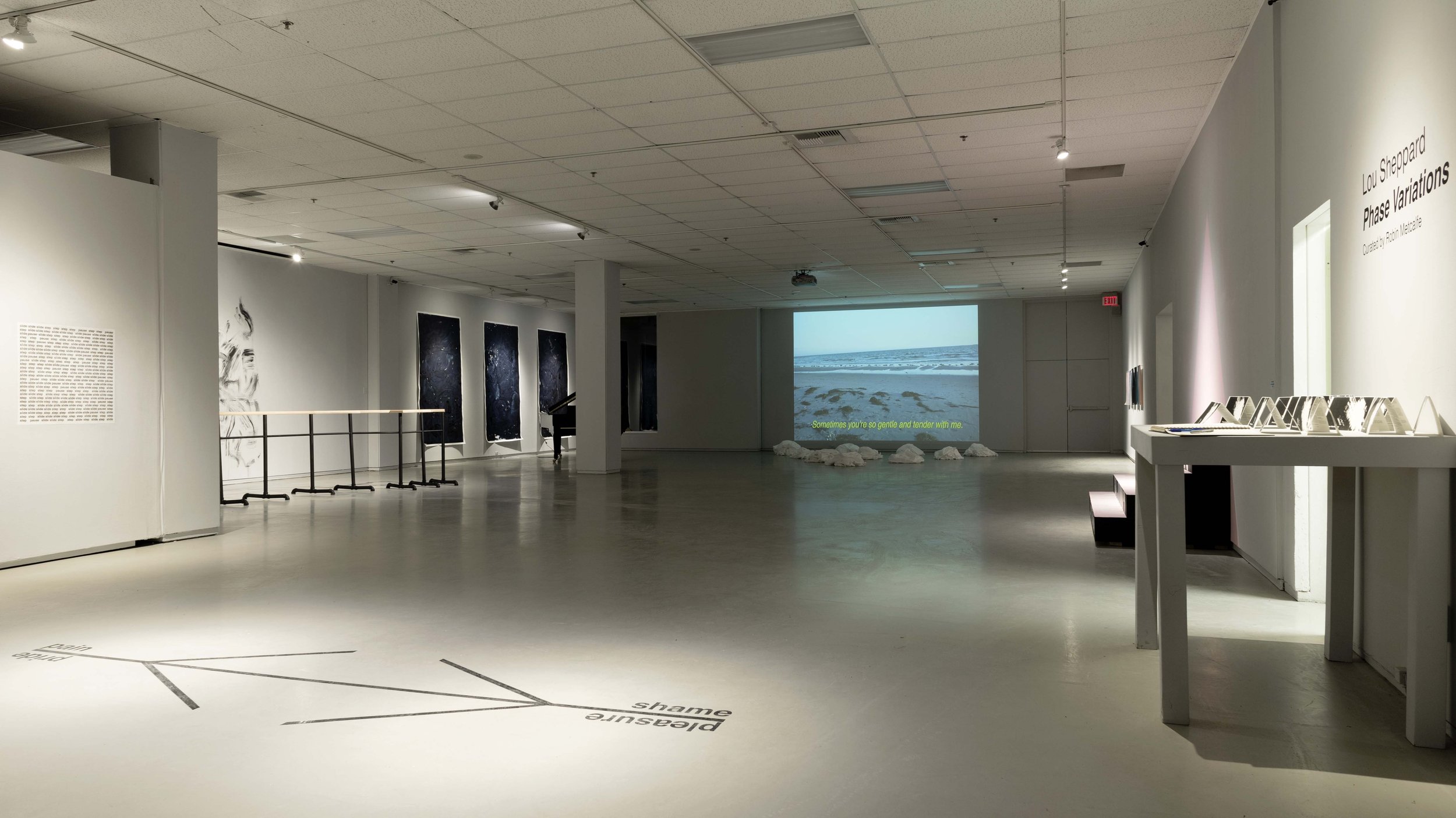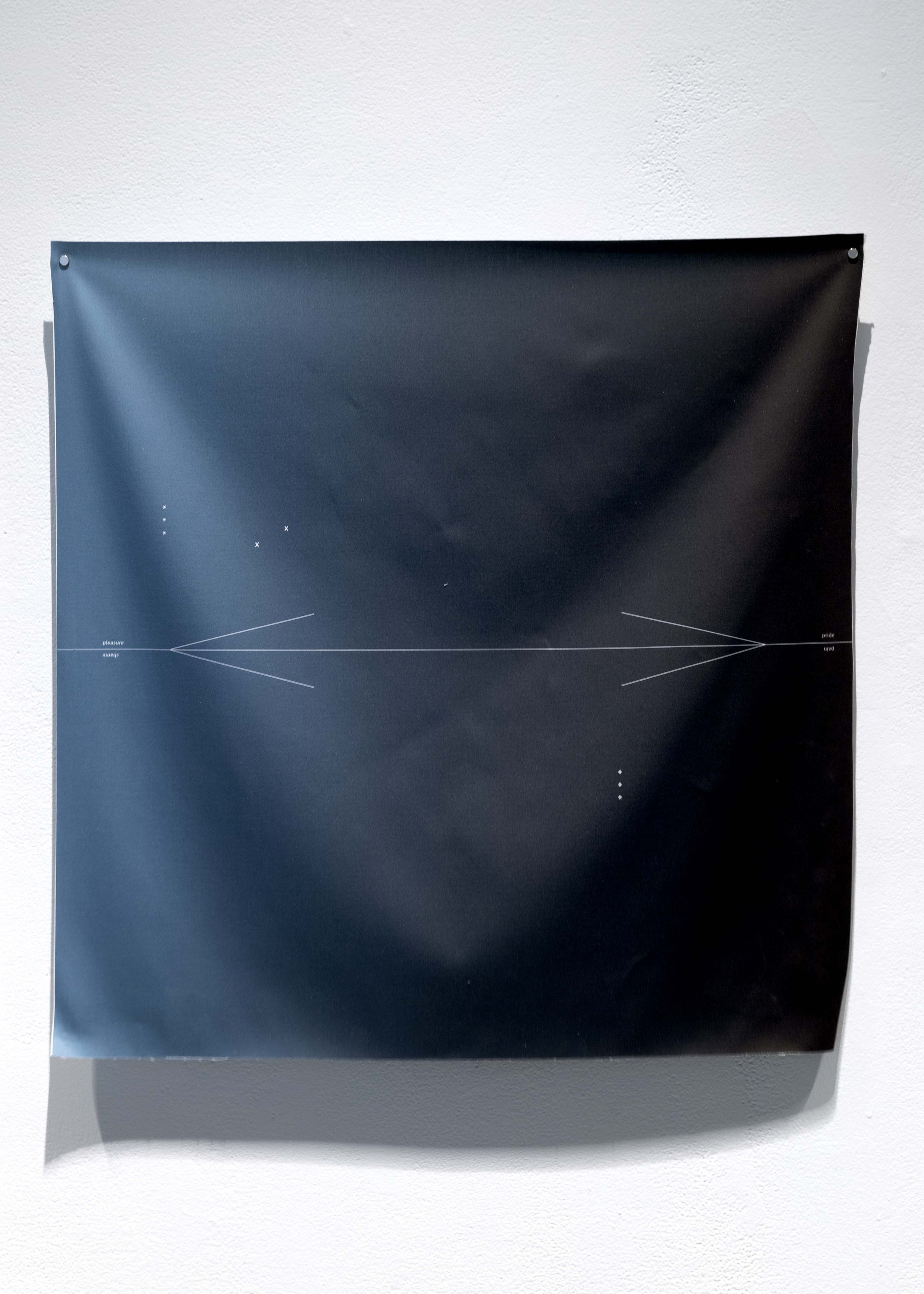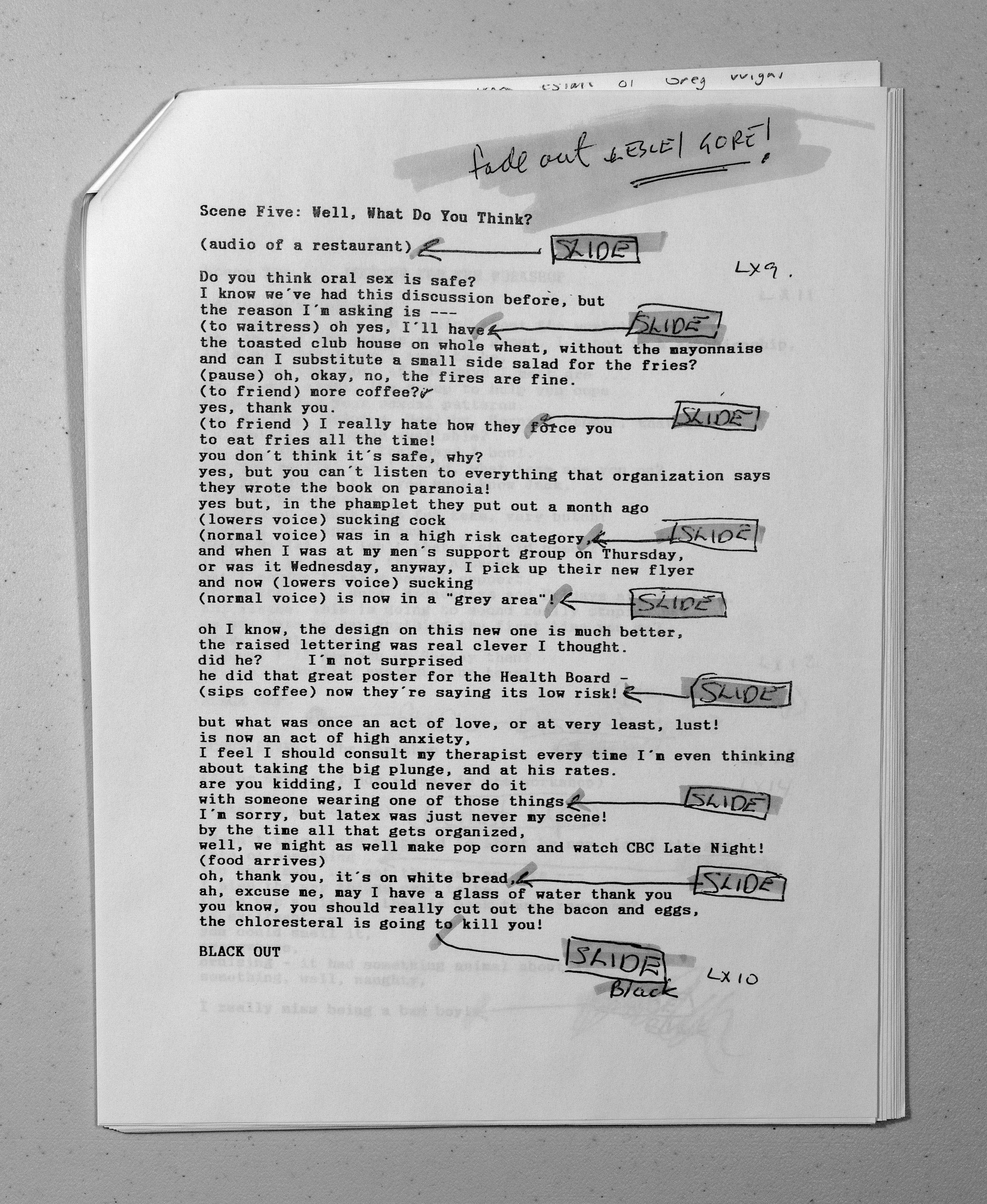Even attempts to erase traces leave traces.
Karen Barad
Curated by Robin Metcalfe with Undine Foulds
Queer history is often overlooked, excluded and erased. When looking for our history we often have to read between the lines and in the margins of official record, looking for resonances, slippages, moments where something is revealed in what isn’t said, revealed in the spaces between what has been recorded. To read queer history we must read queerly.
Phase Variations has been a year(s)-long research project, culminating in an exhibition and publication. The project draws on Robin Metcalfe’s archive of queer history in the Atlantic region, exploring the queer ways that we as queer people find our histories, our ancestors, and imagine our futures. Digging through these archives I have read the collected objects and stories for the spaces and slippages they reveal in the dominant historical record. Can reading the evolution of Canada’s obscenity laws show us how queerness was constructed by the state? Can studying the routes of protests and marches reveal paths of queer movement in the city? Can we read a homophobic remark of the past as a site of queer potential?
I have developed this research into as a series of graphic scores, which are then performed and installed within the gallery space. The gallery operates as a site for the performances, with purpose built staging, traces, and fragments of the performances remaining in the space for exhibition. It is my hope that the gallery will become an affected and affective site- another iteration of the scores themselves.
Phase Variations is borrowed from a biological process undertaken by bacteria to adapt to rapidly changing environments. In music the term points towards phasing- the phenomenon of of out of synch sound waves resulting in a strumming or throbbing effect, and variations- repeated musical passages in a slightly an altered form. Borrowing from the resonances of these terms Phase Variations gestures to the entangled relationship between score and performance. Considering the archive as one state or iteration of actions and events these Phase Variations become re-performances of archived actions, reading the archive itself as a score. What is an archive, after all, but a collection of notations? Can the re-performance of these actions invite queer and quantum slippages? Can we read our history queerly to see what has been hidden, encoded, and forgotten; what was never recorded in the first place?
Tightrope (dance score), 2022 Vinyl on Floor
Reworked from a collection of handrawn maps to parties, cruising spots and protests.
Lonely Hearts Call (Dance) 2022
Morse Code Light and Audio Installation, Scores Please note: This installation contains a flashing light.
When I began to transition I quickly learned the dance of self determination and interpellation. The tension of waiting to be hailed by another, waiting to hear he, she, dyke or fag, and then navigating how I would respond. Language has the power to draw us into our identities and to push us out. My identity is affirmed in language, when I am called ‘he’ the performativity of the pronoun makes me him, and I am betrayed in language when I am not hailed as I am, and left to sort through the messy entanglement of language and my body. The exhilaration of finding another body in that sweaty, unar- ticulated space, a queer recognition and euphoria. All of this a dance.
My Body, My Nation, 2022
Ballet Barre, Wall drawing in charcoal, Score
A ruling between Glad Day Bookshop and the Ontario Court of Justice in May 1992 found a collection of books, comics and videos depicting queer sex acts to be obscene under Canada’s criminal code, rejecting the appeal that these materials be import- ed for sale in the shop. Working from these court rulings as the construction of an impenetrable nation, both in geography and ideology, My Body, My Nation imagines a topographical resis- tance: moments of tender caress in the rivers and valleys of the text.
Time Goes By Strangely, 2022
Piano, Audio Installation, Cyanotype on paper
A meditation on the passage of light through the gallery space and the harmonics of the Yamaha Grand Piano, purchased for Saint Mary’s University by the concert pianist Bill Tritt.
Send Them All to Sable Island, 2022
Video, sheets (slept on by queer community members)
Following an offhanded remark by a Halifax area mayor in the late 80’s Send Them All to Sable Island imagines a queer commune off of Nova Scotia’s coast. Text is taken from a conversation between Jane Kansas and Wilson Hodder (published in The Coast) just a few days before Hodder died of complications due to AIDS, and from two play scripts: The Night They Raided Truxxx by Paul Ledoux and Terry Last and Quarantine of the Mind by David McLean.
Phase Variations (Scores), 2022
Inkjet on cotton satin
Five scores notating each work in the exhibition and their central ideas: queer movement, queer language, queer time, queer exposure, queer place, and queer cosmology.
Queer Bind (The Steps), 2022
Plywood steps, vinyl
The steps in Toronto’s gay village were a place to meet, people watch and hang out, a place to see and be seen. Despite living far from Church and Wellesley the steps played a significant role in my own queerness growing up due to their immortalization on Kids in the Hall. With text lifted from the 1997 exhibition and publication Queer Looking, Queer Acting at MSVU Art Gallery, also curated by Robin Metcalfe, Queer Bind considers the entanglement of marginalization and performance, invisibility and scrutiny of queer identities.
Phase Variations, 2021






























